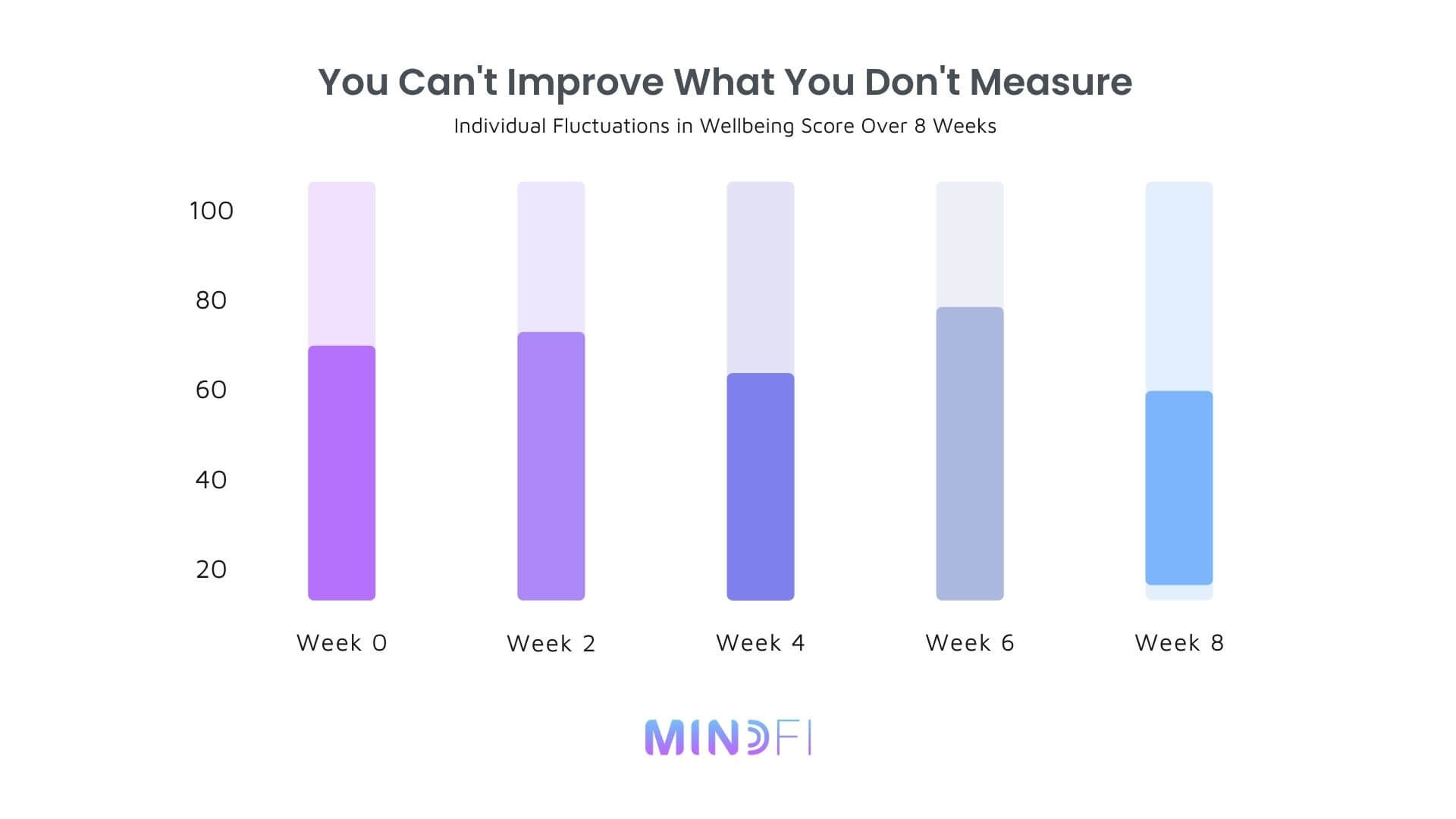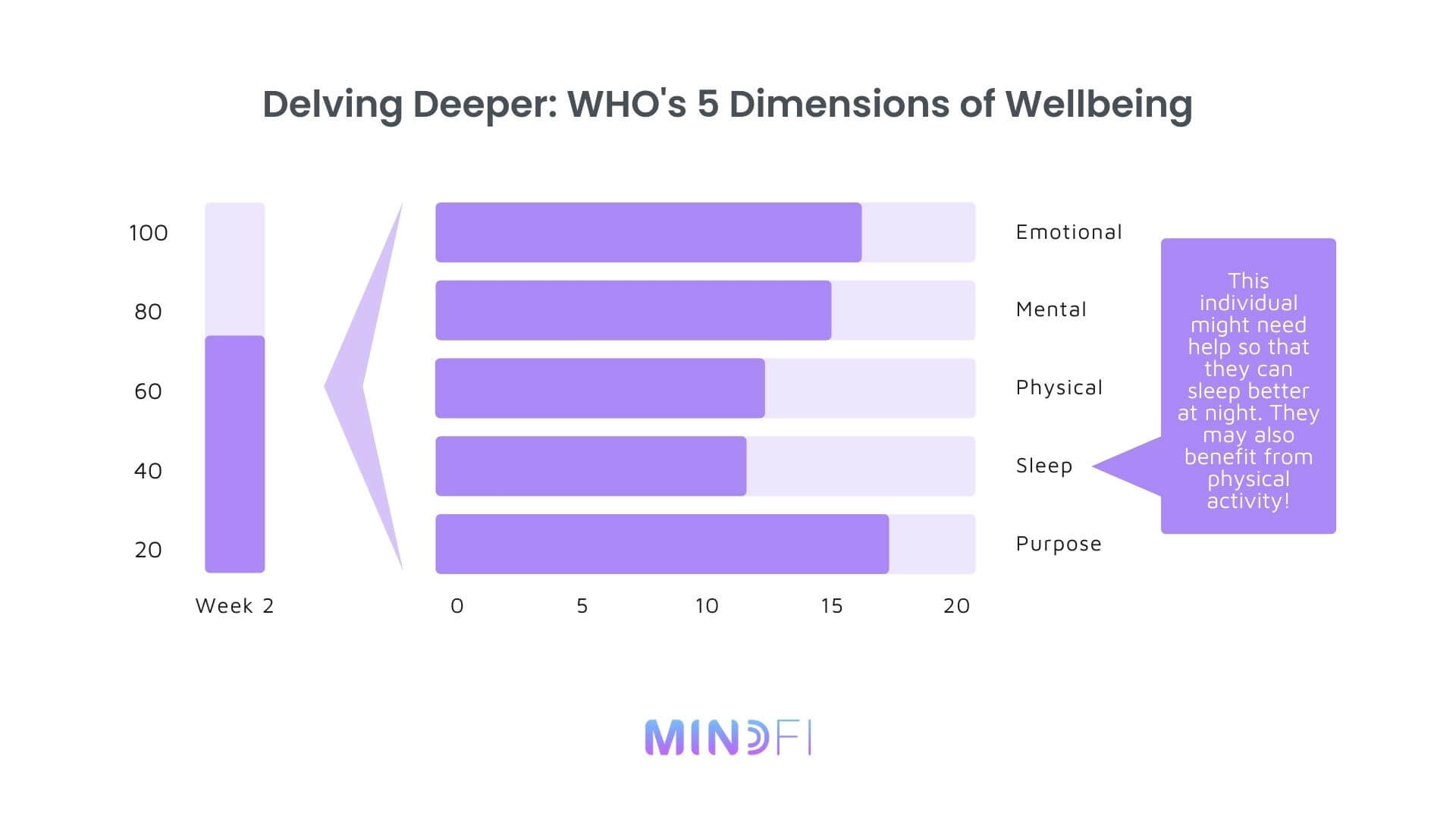For many, the pandemic was an opportunity to begin implementing digital HR tools. Leaders far and wide implemented digital workforce platforms and HR management systems to better manage and understand their people.
The teams who leveraged these tools early gained access to metrics that improved their talent acquisition, workforce planning, and much more.
But at MindFi, we believe there is one final piece to the puzzle: quantifying and tracking employee happiness and wellbeing.
Can happiness be measured?
Lockdowns, hybrid and remote arrangements, and around-the-clock working hours have placed inordinate pressure on employees the world over — and now that they have more freedom to work when and where they want, they’re less likely to stay in a situation where they feel unreasonably stressed and exhausted.
Many agree that a revolution in workforce wellbeing is needed. But for the HR leader, the primary conundrum is: how?
How do we measure wellbeing?
How do we identify what works and what doesn’t?
How do we deliver the right coverage and support to employees, especially given their unique cultural contexts?
Though free gym memberships or providing free snacks on Fridays may be enticing to certain candidates, are they really the best place to start?
To answer these questions, leaders and their respective departments should sit down and have a think about what they feel defines a happy employee. Personally, we believe that happy employees exhibit lower rates of absenteeism and presenteeism, and they’re more engaged in their work. Their expressions during meetings are lighter, they’re free to express their thoughts and ideas, and they produce great work consistently.
Signs of happiness at your company could look similar or different. But what matters is that you know how to recognize them!
How MindFi approaches workplace happiness
The MindFi app includes a suite of features that, put together, can help us assess a workforce’s happiness at any given time. (As mentioned before, we believe productivity and great performance are measurable signs of happiness).
To that end, here are some metrics that we track. This is a non-exhaustive list, as we track much more than the three here — but we hope they can give you an idea of useful wellbeing metrics to track at work.
WHO-5 Wellbeing Scores. Our primary in-app assessments are based on the WHO-5 Wellbeing Assessment. (The image below contains dummy data — we take privacy very seriously).

When employers have a regular snapshot of employees’ collective physical, emotional, mental, spiritual, and social wellbeing, they can introduce the most relevant initiatives and perks. If physical health is low, for example, then that gym membership may not be such a bad idea. Let’s break the dummy data down some more to help you see what we’re talking about:

No individual employee data will be visible to you as an employer. But you will be able to see anonymous, aggregate data across your workforce.
We’ve said that you can’t improve what you don’t measure. By giving you these numbers, our goal is to equip you with the knowledge needed to significantly improve or maintain corporate wellbeing — with actual data and science.
Quick examples:
- If you see that your workforce is low on sleep, you might try to enforce non-working hours or invest in sleep aids.
- If you see that your employees’ physical health is suffering, you might organize a company-wide exercise session.
- If you find that employees seem to lack purpose, you could develop a corporate wellbeing calendar to build community around joy and camaraderie.
EAP usage. Employers often integrate our network of Asia-based therapists and coaches into their Employee Assistance Programs. We can track the kind of topics employees are seeking out, what language their sessions are in, and how often they’re booking sessions with therapists and coaches.
With this information on hand, companies can scale the support they provide according to their workforce’s proven need. You might find that your employees in, say, Indonesia, are particularly in need of high-quality therapy. Or you might see that employees in the Philippines often seek out counsel on parenting — inspiring you to offer a daycare stipend.
In-app mindfulness activity. A self-reported feedback questionnaire on productivity doesn’t just lack clarity — it can also take time to complete. But employers who use the MindFi app can see when (and how often) their employees access our in-app productivity tools, such as the Focus Timer, breathing exercises, and guided meditations. This helps them to reshape the working day so that employees perform at their best.
On maximizing the impact of your human resources
When HR departments track wellbeing data and foster open communication with their employees, they can identify mental health risks, bust productivity blockers, and enjoy a more productive workforce over the long term. One program we launched with a leading financial group in Asia helped to improve the wellbeing of over 70% of its employees — and upon analyzing the preliminary findings, they chose to expand the program further with customized training and additional EAP sessions.
Workforces are finite resources, just like raw production materials. We’re already applying data analytics to optimize supply chains and manufacturing facilities, and we can do the same for our employees — so long as we remember to act with care and kindness.
For example: Employers who prioritize data security and privacy tend to see better uptake of employee assistance programs. One top audit firm among our clients was able to enjoy higher confidence and higher EAP utilization because of MindFi’s built-in confidentiality features. Wellbeing analytics should always be anonymized and encrypted, and used to support rather than punish employees.
When people feel protected and heard at their workplaces, they’re more likely to stay loyal and committed. They’ll also enjoy greater creativity and innovation, and that’s ultimately best for the bottom line.














